Women's History Month: Villanova Scholars Study the Lives and Contributions of History's Most Impactful Women
March is Women’s History Month and this year to celebrate we asked Villanova faculty to identify women, past or present, who have contributed, impacted or influenced their respective field of study. These highlighted women stand at the forefront of innovation and creativity across the globe. Spanning multiple disciplines, we have uncovered these women in some pretty fascinating places.
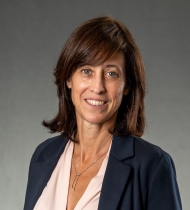
Contributed by Corinne Post, PhD, the Fred J. Springer Endowed Chair in Business Leadership, professor of Management.
Business
Lotte Bailyn, T Wilson (1953) Professor of Management, Emerita, at the MIT Sloan School of Management, wrote pioneering studies regarding possibilities at the intersection of work and family. In 1988, she already saw the possibilities in how information technology could enable flexible work arrangements (while also identifying managers’ unwillingness to yield control as an obstacle). In 1993, she published those ideas in what became a classic book “Breaking the Mold: Women, Men, and Time in the New Corporate World". Over the years, she encouraged and worked with a generation of scholars, such as Leslie Perlow and Joyce Fletcher, to re-think how the use of time in organizations could enable both more productive work and more gender equity. Recognizing her immense contributions to the scholarship of work and family, Harvard University honored her with the 2021 Centennial Medal, one of the highest honors reserved to their alumni.
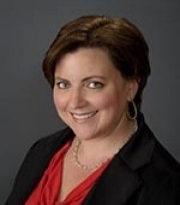
Submitted by Amanda Grannas, PhD, Vice Provost for Research, professor of Chemistry
Chemistry
Ellen Mosley-Thompson has done and continues to do, transformational research in the areas of glaciology and climatology. In 1986, she was the first woman to lead an ice core drilling project to a remote field camp on the East Antarctic Plateau near the Pole of Inaccessibility. She was the first woman to receive the Distinguished Explorer Award from the Roy Chapman Andrews Society. She was the first and only woman to be the director of the Byrd Polar and Climate Research Center. Her list of accolades is long and distinguished. Dr. Grannas can personally attest to the impact Dr. Thompson has had on women in polar science. In the male-dominated field of polar field research, Dr. Grannas credits Dr. Thompson's example and influence in helping her decide to continue doing polar fieldwork.
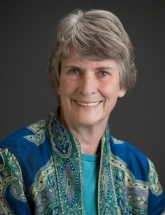
Contributed by Lillian N. Cassel, PhD, professor of Computing Science.
Computer Science
Dr. Anita Borg (1949-2003) is an early example of a woman in computer science, specifically the computer systems subfield. Historically, women in computer science were few and often overlooked. In computer systems, they were even rarer. Anita was able to form social groups among the few women in the area and created the SYSTERS email group. in 1994, she co-founded the first conference dedicated to highlighting the accomplishments of women in computing, the Grace Hopper Celebration. The conference was attended by 25,000 participants in 2019. Anita believed that organizations that actively include women thrive and that technology will solve more of the world's problems -- when women are involved in creating it.
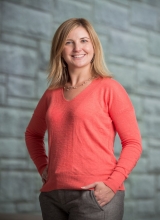
Contributed by Bridget Wadzuk, PhD, Edward A. Daylor Chair in Civil Engineering, professor of Engineering.
Engineering
Margaret S. Petersen (1920-2013) started work for the U.S. Army Corps of Engineers during World War II as a drafter working in the Panama Canal Zone; one of only four women employed by the Corps at the Canal. She then went on to study Civil Engineering at the University of Iowa with legend Hunter Rouse and she was the second woman to graduate with a civil engineering degree from Iowa. Margaret had a distinguished 35-year career with the Corps and also taught at the University of Arizona. She was a recognized expert in hydraulic engineering and especially river re-alignment. Additionally, she took great interest in educating and mentoring students, and it is for this reason that the American Society of Civil Engineers now has the Margaret S. Petersen Award, which aims to recognize a woman who has demonstrated exemplary service to the water resources and environmental science and engineering community.
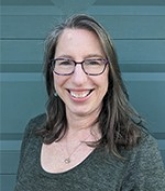
Contributed by Jean Lutes, PhD, Luckow Family Endowed Chair in English Literature, professor of English.
English
Black author, activist, and educator Alice Dunbar-Nelson (1875-1935) had a long and prolific career, but her work is often overlooked. Most often remembered today for her 1918 war poem "I Sit and Sew," she wrote with verve and passion on a variety of topics for a wide range of venues. She published a series of vivid stories based on her work teaching Black kindergarteners in New York City in the 1890s, for instance. She also advocated for women's rights and anti-lynching legislation. Dunbar-Nelson has Philadelphia roots, too. She often visited Philadelphia and she moved to the city in her final years. When she died, her ashes were scattered in the Delaware River.

Contributed by Joseph Lennon, PhD, Associate Dean, Emily C. Riley Director of Center for Irish Studies, professor of English.
Marion Wallace-Dunlop (1864-1942) was an illustrator and fine arts and portrait painter who changed when she began to march for women’s suffrage. She became one of the thinkers behind the militant “suffragette” (they adopted the term) movement in Great Britain. She designed spectacular processions for the Women’s Social and Political Union (W.S.P.U.) and led deputations first to Parliament and then to prison. Her hunger strike—the first seeking to directly influence public opinion and pressure politicians and not jailers and prison authorities—made for experimental political theater in a prison cell. At the center stage of the news drama, she cast herself as a principled aristocratic woman starving for the cause of women’s suffrage. But her story spread far beyond Parliament and London. Wallace-Dunlop survived her ordeal, and her strategy prompted 240 other women to strike in succession globally.

Contributed by Paul Rosier, PhD, Mary M. Birle Chair in American History, professor of History.
History
Sioux writer and activist Gertrude Bonnin (aka Zitkala-Sa) (1876-1938) was forcefully committed to advancing Native Americans’ cultural traditions and citizenship rights during the first half of the 20th century. A granddaughter of Sitting Bull, Bonnin was both a product of the federal Indian boarding school system and one of its fiercest critics, especially of its effort to destroy all vestiges of Native culture and identity, which she celebrated in a series of articles and books. Bonnin also supported women’s rights groups in the early 1920s, speaking on Native people’s “lack of political rights” at the National Women’s Party 1921 convention. Bonnin’s National Council of American Indians (NCAI) emerged in 1926 as the most effective national Indian organization, building a network of over fifty tribal citizenship “lodges” across the country. Although she exerted pressure on elected officials inside and outside of Washington, D.C., her primary focus was inspiring Native people to use their newfound right to vote in local, state, and national elections. Bonnin devoted her extraordinary political career to fighting for Native treaty rights, encouraging Native people to vote, and demanding that government officials recognize Native people’s dual citizenship.

Contributed by Ann Juliano, professor of Law.
Law
Arlinda Locklear (Lumbee) is an exceptional litigator and oral advocate who has dedicated her 45-year career to securing the sovereignty and rights of Native American tribes. A member of the Lumbee tribe, she decided to become a lawyer after experiencing segregation in North Carolina while growing up. She is widely considered the first Native American woman to argue before the Supreme Court. She successfully argued a legal theory, which she formulated, that paved the way for all future land claim litigation. She is a brilliant oral advocate who has, by way of her skills and intellect, convinced Supreme Court Justices and Department of Justice officials to protect Native American rights.
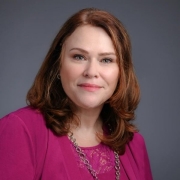
Contributed by Linda Maldonado PhD, RN assistant professor of Nursing and Visiting Professor, Center for Peace and Justice Education
Nursing
Sister Teresita Hinnegan (1927-2020), a Medical Missions Sister, lived in Bangladesh where she served in urban and rural hospitals. In an oral history interview with Dr. Maldonado, Sister Teresita described how she came back to the United States to help her sister, who was then alone with two children, to get back on her feet. It was then that Sister Teresita learned, in her words, how “dysfunctional the system was for women with children to get the help they needed.” While helping her sister, she worked as a nurse-midwife in a Philadelphia community health center where she witnessed the lack of health care resources for women living in poverty. These experiences influenced her decision to return to school for a Master’s degree in Social Administration at Temple University. She stated, “I learned a lot, again, about the system and how dysfunctional it was and the change that was needed.” In the 1980s, Sister Teresita and a handful of other professionals initiated the Maternity Care Coalition. This grassroots collaboration of seven Philadelphia area organizations composed of healthcare professionals and welfare and women’s rights groups, joined together to start the Maternity Care Coalition specifically geared to understanding and dramatically reducing the growing numbers of infants dying before their first birthday in the city of Philadelphia.
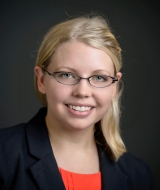
Contributed by Chelsea Phillips, MFA, PhD, Associate Director for Villanova Theatre, associate professor of Theatre
Theatre
Actress Dorothy Jordan (1761-1816) lived what sounds like a fairytale: born into impoverished circumstances, she used her talents and wit to rise to the heights of celebrity in late-eighteenth-century London. On stage, she became famous, beloved, and applauded. In private life, she fell in love with a prince and lived as his wife in all but name for two decades. A mother of three already, she bore him ten children while maintaining her high-profile career. But this is not a fairytale. It is the story of a woman who worked constantly to navigate the often-dangerous waters of fame, fortune, and family to build and maintain a staggeringly successful career in the face of scandal and prejudice.
